Let’s face the truth; the Galapagos Islands are really expensive. Even with the best deals, the numbers at the end of those tours can be discouraging if you are on a tight budget. You’re paying for an international ticket, entrance fees, and cruise or land-based package. Even a deal that looks expensive after that. Here is our DIY Galapagos travel guide, which outlines budget-friendly hotels, and all spectacular Galapagos destinations you can do guide free.
Table of contents: ()
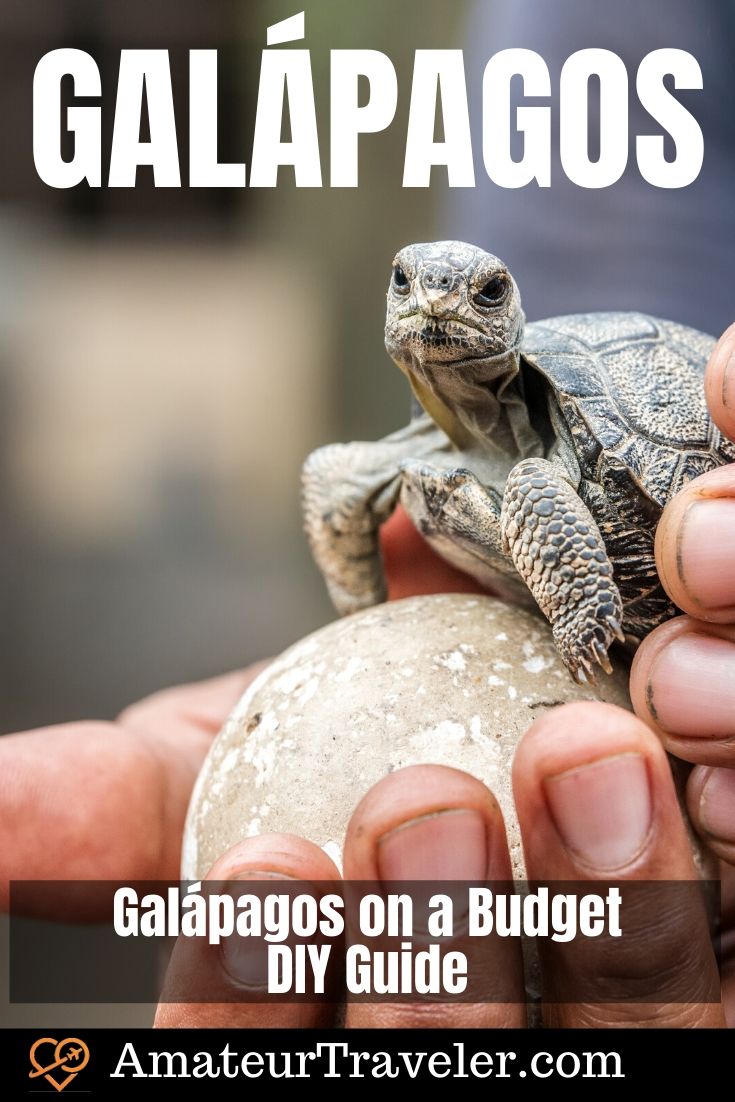
- Purchase these items before the Galapagos Islands
- The Habitable Galapagos Islands
- Santa Cruz – DIY Galapagos Travel Guide
- San Cristobal – DIY Galapagos Travel Guide
- Isabela Islands – DIY Galapagos Travel Guide
- Floreana – DIY Galapagos Travel Guide
- In which order should you do the Islands?
- Podcast – Travel to Ecuador
Not only that, but you can do it for less than 100 dollars a day, including housing, meals, and, transportation, and exploration recommend for those people that feel that the deals just aren’t cutting it, try to do one or two guided tours that take you to the places you can’t get to yourself, and then study up on how to see islands yourself! I’ve got you covered, as I’ve it all out in this DIY Galapagos Travel Guide.
Purchase these items before the Galapagos Islands
If you truly want to save some money, you need to purchase some products before you head out to the Islands. Because you are choosing a DIY approach, you will want to bring equipment to avoid rentals. Most importantly, bring your own snorkel gear, which will cost anywhere between 15-30 dollars per day per person. This set runs on Amazon for less than 40 dollars, which would offset the price of two or three rentals and more importantly save time. Get them early and try it on to make sure it fits so you aren’t cramping in the water.
Additionally, bring reef-safe sunscreen and your own DEET-free bug spray, although the bugs aren’t ever a big problem Islands. Literally, everything on the islands is exponentially more expensive, including alcohol (Duty-Free, woo woo!) and snacks. Get the products before you go, and make sure the SPF is really high as the equatorial sun will burn you in 30 minutes flat if you don’t apply. Remember: Reapply, Reapply, Reapply! Don’t have the expensive vacationed ruined in one-day because you or your child got roasted.
Secondly, bring lots of small bills and change. Luckily for you, no math is needed as Ecuador uses the U.S. dollar and one-dollar coins. Stack up on 5’s, 10’s and dollar coins, and don’t bring anything over 20’s.
The Habitable Galapagos Islands
Four Islands of the Galapagos are habitable, in which you can spend the night in a comfortable hotel and explore the islands, totally guide free. The islands are Santa Cruz, San Cristobal, Isabela, and Floreana. Additionally, ferries run between these islands, so you can spend a few nights on one and move to the next once you’ve exhausted the free options. On each island, there are many opportunities for visiting guide free spots for very cheap, or even free.
Santa Cruz – DIY Galapagos Travel Guide
The second-largest island of Galapagos, home to black-lava shores, stunning rock cliffs, amazing lava tunnels, and pristine beaches. Santa Cruz is the closest island to the Baltra airport and is situated between Isabela and San Cristobal.
Tortuga Bay
Tortuga bay is arguably the number one free thing to do in Santa Cruz, and it is open from 6 am to 6 pm. It’s a 30-minute walk from the town of Puerto Ayora, a little longer without kids. If walking, head out early morning or evening to avoid the heat. Alternatively, you can take a taxi for $1-2. The sands of Tortuga Bay are powder-soft and brilliantly white. Along the trail, you will see the hundred-year-old prickly pear cactus, and the guests include the monstrous-looking marine iguanas, lava lizards, vividly red Sally lightfoot crabs, and Galapagos mockingbirds.
Other creatures you will likely witness are the blue-footed boobies dive-bombing the turquoise waters, and sea turtles lazily floating along. You can only swim in the Playa Mansa, the second beach along the trail, where you can snorkel. It has fantastic snorkeling, as the mangroves nearby provide nutrients for gentle reef sharks, marine iguanas, and sea turtles.
The Charles Darwin Research Center
15 minutes from the city center, witness one of the most iconic species of the Galapagos islands, the 500 pounds Galapagos Tortoise. You will find these guys at varying stages in their development, from hatchlings to adults, a fascinating sight for adults and children alike.
Additionally, there is a unique museum featuring Lonesome George, a tortoise who during his life was recognized as the rarest creature in the world and a symbol of conservation as he was the last of his kind.
Speaking of conservation, the Charles Darwin research center is the biggest conservation organization on the islands, and with their valiant efforts, they help repopulate the islands with tortoises and run biological studies.
It is open from 7:30 am – 12-30pm and 2pm – 5pm. 5 minutes from the center is the Playa de la Estacion, where you can snorkel with marine iguanas and colorful fish.
Alemanes Beach & Las Grietas
From the Pier, take an 80 cent water taxi to Alemanes (German) beach, another gorgeous beach of the Galapagos where you can spot marine iguanas, American oystercatchers, and sea lions. From this beach, walk 20 minutes to Las Grietas, canyons formed from volcanic activity. Within the canyons are crystal clear brackish waters full of sea lions, colorful fish, and rays.
Accommodation
Getting There
After flying into the Baltra Airport, you will take a 10-minute 5$ bus ride, and then take a $1 ferry. Once you arrive on the other side, take a $5 bus, or a $20 taxi to the city of Puerto Ayora, where you will find your hotels. We always recommend DIYers to visit the information center for a free map and updated information about taxi, restaurants, and rentals.
San Cristobal – DIY Galapagos Travel Guide
The oldest island of the Galapagos, with wonderful opportunities to see the red-footed boobies, the famous kicker rock, and go on spectacular snorkeling adventures.
- Get a universal plug adapter
- Book Your Accommodation HERE
- Buy Travel Insurance
- Get an eSim to be able to use your smartphone abroad.
- Search for Great Tours HERE
- Get a Car Rental
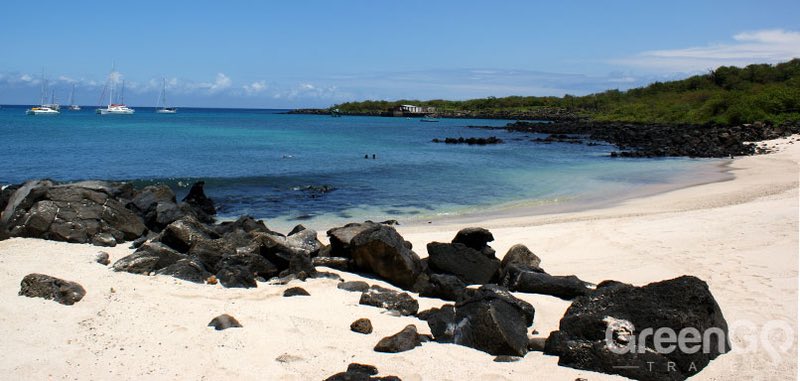
Playa Mann
If you want to watch a spectacular sunset and spend a few hours of relaxation, this beach is perfect. Two restaurants are on the beach that can bring food to your spot on the beach, at an excellent price of 5 dollars per person. If you want to live like a local, grab some beers from a nearby store and bring them with you. Additionally, there is a free freshwater shower to wash off the saltwater so you can head to your next destination.
Interpretation Center
Learn about the history of the island along with conservation challenges. Additionally, hear the story of the fascinating murder mystery case of Isla Floreana. Paths near the center give way to stunning views of Kicker Rock, an immense lava cone jutting out of the pacific and coveted snorkel site in which you can do a paid snorkel tour.
La Loberia Beach
The Loberia beach is a stunning beach 40 minutes from town, but you will likely want to pay for a taxi as the heat can be unbearable unless you go early morning or late evening.
There is a high number of sea lions along the beach, along with marine iguanas, sea turtles.
Bring your snorkel gear, as the underwater sights are fantastic and free.
Among the colorful corals, you can find sea stars, tropical fish, white-tipped reef sharks, eels, and more!
San Cristobal Highland Tours
San Cristobal is also known for the various highland tours, which can be done DIY. You can do this for a $45-60 taxi ride per car. Split the costs with other guests to make it budget-friendly. Some of the recommended places include:
El Ceibo
$2 entrance fee per person). A 300-year-old treehouse, that even extends into an underground basement. You can even pay to spend the night here.
Galapaguera de Cerro Colorado
Watch mammoth Galapagos Tortoises roaming around freely in their natural habitat. These guys actually can move surprisingly fast, so have your cameras ready.
Recommended Paid Tour – Kicker Rock
For anyone visiting San Cristobal, we recommend spending the extra money on a DIY trip on a kicker rock snorkel tour. It will be around $100 for snorkeling, or 150 for scuba, including a packed lunch. This site is really awesome. When I went I saw 10+ sea turtles, two large sharks, huge schools of fish. Moreover, you get to swim through the giant rock through a canyon, and there are chances to see hammerheads within.
Accommodation
Isabela Islands – DIY Galapagos Travel Guide
Concha de Perla
An easy walk or cab from Puerto Villamil, snorkel the mangroves housing sea lions, marine Iguana, colorful fish, sea turtles, Marbel and Spotted stingrays, white-tipped reef sharks, giant pufferfish, eels, urchins, starfish, and even Galapagos Penguins. Along the boardwalk, you will without a doubt see sea lions lazing in the sun as well as marine iguanas.
The Wall of Tears
Bring lots of water on this trip, and rent a bike in Puerto Villamil. Make sure to stop along the route to see the various beaches, lava tunnels, and stunning lagoons with flamingos. This trip will take an hour each way. Animals you may see include the giant tortoises, sea lions on the beaches, and marine iguanas. The end of the trail leads to the wall of tears. While not miraculous on its own, knowing the story behind it is what really makes it special.
Prisoners of a penal colony constructed the wall by hand for over 14 years. In the unbearable heat, prisoners collected sharp heavy rocks to stock on the wall. The Wall of Tears likely took the lives of thousands of prisoners due to injuries, the climate, and poor treatment. Additionally, these hardened men were broken down from the impossible labor, which led to the origin of the Wall of Tear’s name.
The Crianza Arnaldo Tupiza Breeding Center
On the way to the wall of tears from the town, this center focuses on breeding tortoises. This site is similar to the Charles Darwin center on Santa Cruz, and you can see tortoises in varying stages of development. Additionally, there is a path leading to a lagoon with flamingos.
Playa del Amor
This is a small beach on the way to the spooky Wall of Tears. This beach is perfect for a relaxing dip. Along the coast, you will find lava tubes and a rocky volcanic landscape dotted with marine iguanas.
Recommended paid tours – DIY Galapagos Travel Guide
Sierra Negra Trek – $30 – 50
The Sierra Negra is a half-day, 15km hike with a moderate gradient taking you through beautiful old lava flows and leading to magnificent views from the top of the world’s second-largest volcanic crater. This trip is for the active, and not recommended for young children or those with knee or hip issues. Bring lots of water and sunscreen, and good hiking shoes.
Los Tuneles Snorkeling – $150
This site is an ancient black lava bed that developed into arches and tunnels. Snorkeling this site is fascinating, with species including white-tipped sharks, sea horses, stingrays, penguins, sea turtles, blue-footed boobies, and even sea horses.
Las Tintoreras – $40
A half-day guided tour of a small island just off the coast of Isabella. Wildlife includes penguins, iguanas, and sharks.
Accommodation
Floreana – DIY Galapagos Travel Guide
Floreana is a small island of the Galapagos, with excellent opportunities for snorkeling, relaxing in solitude, and witnessing the pink flamingos. With less than 200 inhabitants, it is harder to find restaurants and stores, so make sure you bring lots of snacks and water. The majority of visitors do day trips from Santa Cruz.
Post Office Bay
How did whalers get the mail out in the 1700s? By placing a wooden barrel in a designated spot, where those at sea could place mail and hope whoever was returning home would be kind enough to hand-deliver their male. Remember, cities weren’t as big back then.
Cormorant Point
Cormorant Point is a wildlife paradise, a gorgeous lagoon full of pink flamingos. Other creatures include blue-footed boobies, sea lions, marine iguanas, lava lizards, frigate birds, rays, and sea turtles. Don’t forget to bring your snorkel, as the underwater views are magnificent.
Playa Negra
A unique black sand beach with wonderful opportunities to escape to a secluded beach and enjoy snorkeling opportunities with sea turtles, sea lions, and colorful. Black sand develops over millions of years from eroded volcanic material such as lava and basalt rocks.
Accommodation
Transport between Islands
A ferry between islands cost between $25-35 per person and will take between three to four hours depending on sea conditions. The name ferry is slightly misleading, as these are high-powered speedboats.
In which order should you do the Islands?
Your trip will either begin on Santa Cruz or San Cristobal Island, due to the location of the airports. Ferries depart between the islands at almost the same time every day:
- Santa Cruz to San Cristobal: Departs 7 am and 2 pm
- San Cristobal to Santa Cruz: Departs 7 am and 3 pm
- Santa Cruz to Isabela: Departs 7 am and 2 pm
- Isabela to Santa Cruz: Departs 6 am and 2 pm
We advise flying into the San Cristobal airport and spending a few days on the island. From there, ferry over to Santa Cruz. During this stay, consider a day trip to Floreana Island. We typically don’t recommend stays on Floreana unless you have ample time, as they ferry rides do not depart daily. After exploring Santa Cruz Island to your content, spend your last days adventuring Isabela Island. Remember, you will have to ferry back to Santa Cruz and make your way to the Baltra airport for your departure.
Podcast
Hear Keenan talk more about Ecuador on Travel to Ecuador – Amateur Traveler podcast episode 695:

Leave a Reply
Tags: adventure travel, article, ecuador, galapagos islands


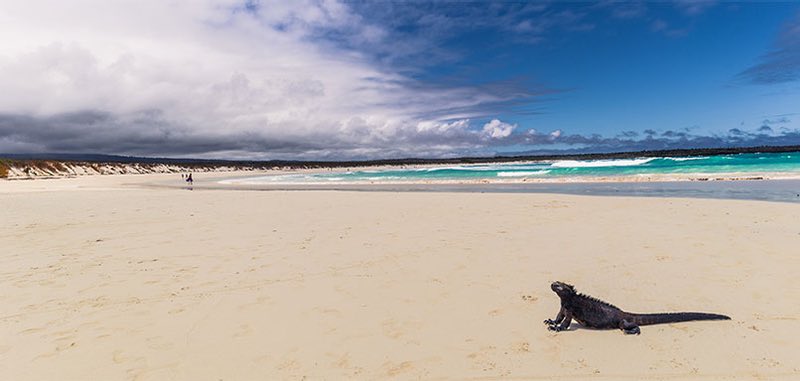
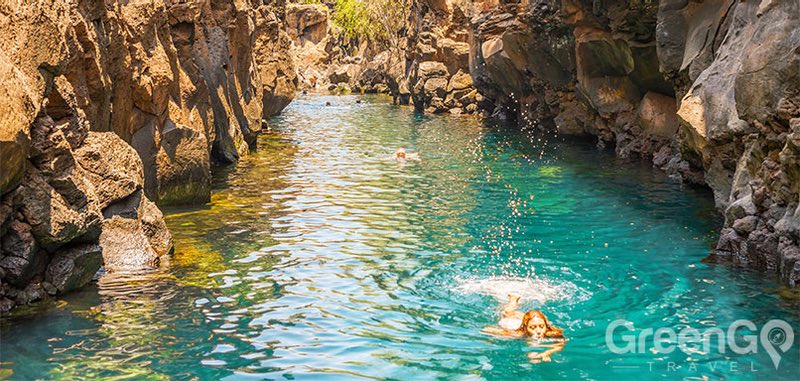



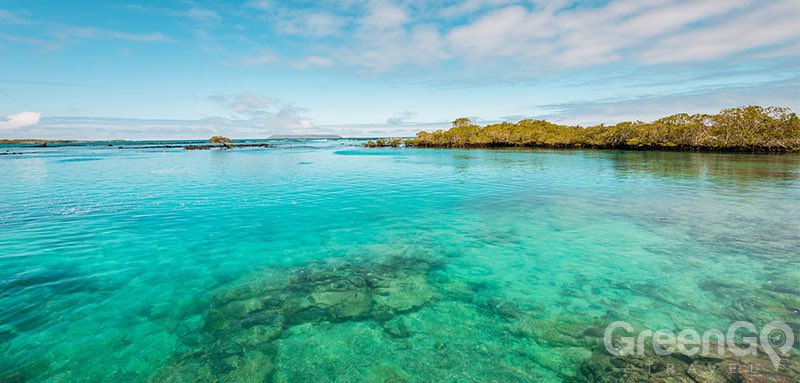
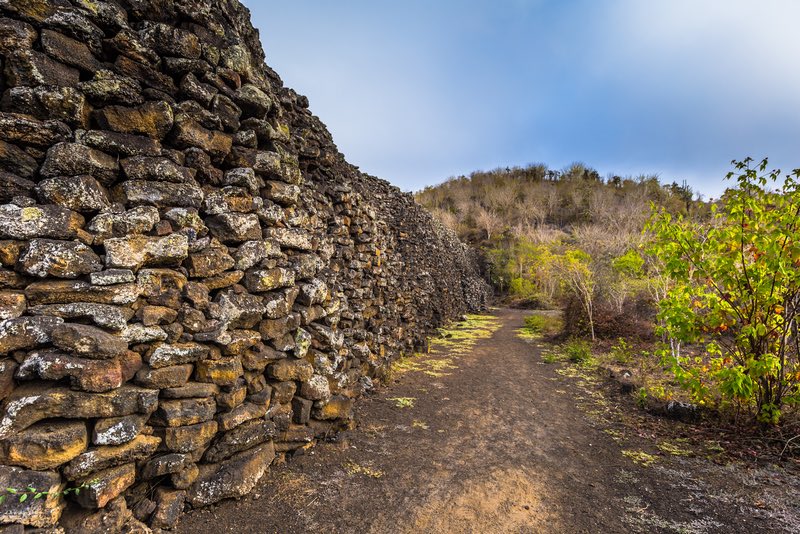
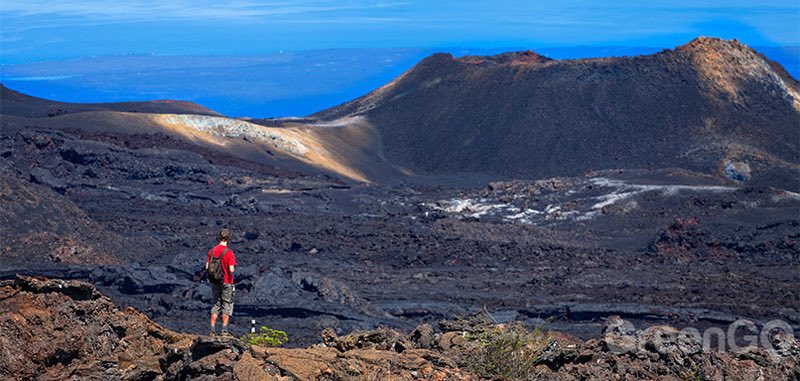
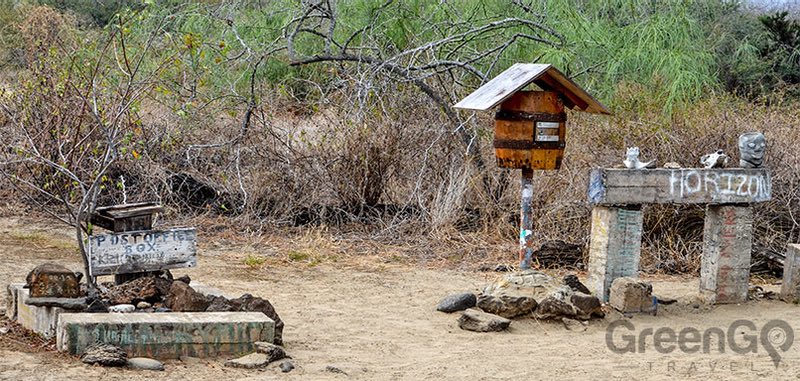

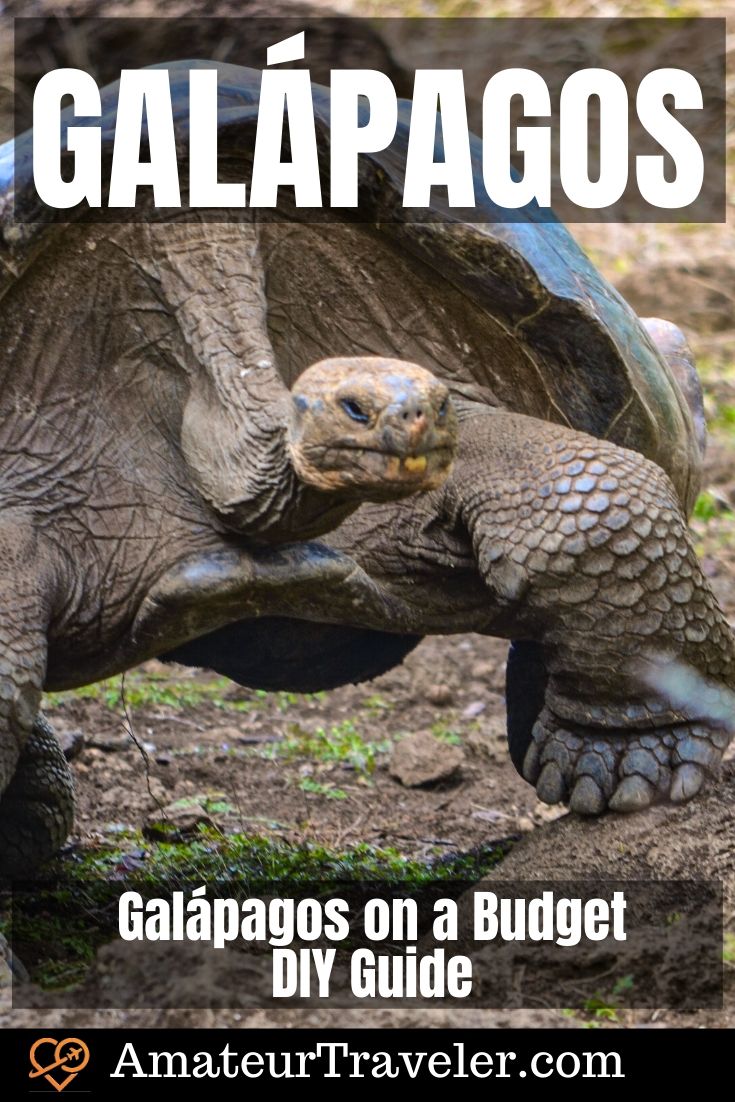
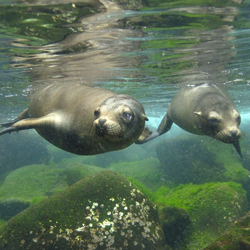 Travel to the Galapagos Islands of Ecuador – Episode 351
Travel to the Galapagos Islands of Ecuador – Episode 351 Travel to the Galapagos Islands – Episode 89
Travel to the Galapagos Islands – Episode 89 A Guide to the Museums of Lima, Peru
A Guide to the Museums of Lima, Peru Guide to Buses in Quito Ecuador
Guide to Buses in Quito Ecuador
